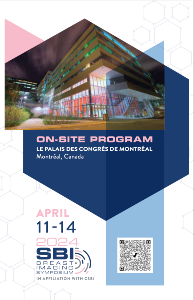Enhancing Quality and Safety Protocols in Breast MRI: A Radiology Department's Initiative
ePosters
- ST
Shahrzad Tavana, MD
Diagnostic Radiology Resident, Chief Resident
University Hospitals Cleveland Medical Center, Case Western University School of Medicine
Presenter(s)
Purpose: This project aims to evaluate the impact of specialized training sessions for MRI technologists on improving breast MRI acquisition and processing. The initiative addresses critical aspects of breast MRI acquisition, including optimizing breast positioning within the coil to mitigate inhomogeneous fat-saturation artifacts, refining the field of view to encompass only the breasts and the axilla for superior image quality and lesion visibility, and ensuring accurate sequence submissions to the picture archiving and communication system (PACS) to facilitate comparisons with prior examinations.
Materials and Methods: In January 2022, MRI technologists at a large academic center underwent dedicated one-hour training sessions tailored to teaching the proper breast positioning within dedicated breast coils, selecting the appropriate field of view to encompass only the breasts and the axilla, and ensuring accurate sequence submission to PACS. This study conducted a comparative analysis between pre- and post-training groups, assessing their compliance with these three tasks. A total of 160 diagnostic breast MRIs, including 80 pre-training and 80 post-training, were examined to assess compliance. The pre-training MRIs were selected from the two months preceding the initiation of the training sessions (November 2021 to December 2021), while the post-training MRIs were selected from the two months following the training sessions (February 2022 to March 2022). Abbreviated breast MRIs, implant integrity breast MRIs, and MRIs of patients with a history of mastectomy were excluded from the study. Chi-squared analysis was employed to determine the statistical significance between the pre- and post-training groups, with a p-value threshold of less than 0.05 indicating statistical significance.
Results: In the pre-training group, the compliance rates were 52% for correct breast positioning within the coil, 62% for selecting the appropriate field of view, and 47% for accurately submitting sequences to the PACS. Subsequent to the intervention, statistically significant improvements were observed in the compliance rates, increasing to 77% for correct breast positioning (p-value 0.0001), 91% for selecting the accurate field of view (p-value 0.0001), and 86% for the correct submission of sequences to the PACS (p-value 0.0001).
Conclusion: Our findings demonstrate that dedicated training sessions for MRI technologists, aimed at optimizing image acquisition and sequence submission, led to a statistically significant improvement in compliance.
Clinical Relevance Statement: This project underscores the importance of collaborative efforts between radiologists and MRI technologists, resulting in improved quality of breast MRIs. The ultimate objective is to reduce the necessity for patient callbacks for repeat examinations and more accurate interpretation of the findings based on higher-quality images.
Materials and Methods: In January 2022, MRI technologists at a large academic center underwent dedicated one-hour training sessions tailored to teaching the proper breast positioning within dedicated breast coils, selecting the appropriate field of view to encompass only the breasts and the axilla, and ensuring accurate sequence submission to PACS. This study conducted a comparative analysis between pre- and post-training groups, assessing their compliance with these three tasks. A total of 160 diagnostic breast MRIs, including 80 pre-training and 80 post-training, were examined to assess compliance. The pre-training MRIs were selected from the two months preceding the initiation of the training sessions (November 2021 to December 2021), while the post-training MRIs were selected from the two months following the training sessions (February 2022 to March 2022). Abbreviated breast MRIs, implant integrity breast MRIs, and MRIs of patients with a history of mastectomy were excluded from the study. Chi-squared analysis was employed to determine the statistical significance between the pre- and post-training groups, with a p-value threshold of less than 0.05 indicating statistical significance.
Results: In the pre-training group, the compliance rates were 52% for correct breast positioning within the coil, 62% for selecting the appropriate field of view, and 47% for accurately submitting sequences to the PACS. Subsequent to the intervention, statistically significant improvements were observed in the compliance rates, increasing to 77% for correct breast positioning (p-value 0.0001), 91% for selecting the accurate field of view (p-value 0.0001), and 86% for the correct submission of sequences to the PACS (p-value 0.0001).
Conclusion: Our findings demonstrate that dedicated training sessions for MRI technologists, aimed at optimizing image acquisition and sequence submission, led to a statistically significant improvement in compliance.
Clinical Relevance Statement: This project underscores the importance of collaborative efforts between radiologists and MRI technologists, resulting in improved quality of breast MRIs. The ultimate objective is to reduce the necessity for patient callbacks for repeat examinations and more accurate interpretation of the findings based on higher-quality images.

